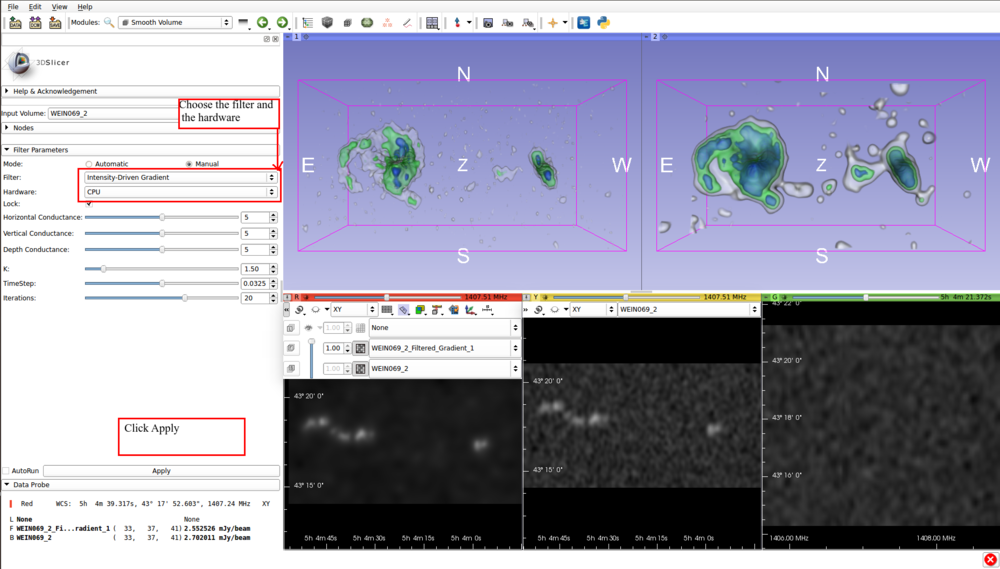Difference between revisions of "Documentation/Nightly/Modules/AstroSmoothing"
| Line 39: | Line 39: | ||
<!-- ---------------------------- --> | <!-- ---------------------------- --> | ||
{{documentation/{{documentation/version}}/module-section|Panels and their use}} | {{documentation/{{documentation/version}}/module-section|Panels and their use}} | ||
| − | * [[File:SlicerAstroWiki8.png| | + | * [[File:SlicerAstroWiki8.png|1000px]] |
<!-- ---------------------------- --> | <!-- ---------------------------- --> | ||
Revision as of 04:54, 10 February 2017
Home < Documentation < Nightly < Modules < AstroSmoothing
|
For the latest Slicer documentation, visit the read-the-docs. |
Introduction and Acknowledgements
|
Authors: Contributors: Acknowledgements: Contacts:
|
Module Description
The Smoothing module contain a set of filters (parallelized with OpenMP and OpenGL) aimed to denoise astronomical (HI) dataset:
- Anisotropic Box
- Anisotropic Gaussian
- Intensity-driven Gradient
Panels and their use
References
@ARTICLE{2016arXiv160903782P,
author = {{Punzo}, D. and {van der Hulst}, J.~M. and {Roerdink}, J.~B.~T.~M.
},
title = "{Finding faint HI structure in and around galaxies: scraping the barrel}",
journal = {ArXiv e-prints},
archivePrefix = "arXiv",
eprint = {1609.03782},
primaryClass = "astro-ph.IM",
keywords = {Astrophysics - Instrumentation and Methods for Astrophysics},
year = 2016,
month = sep,
adsurl = {http://adsabs.harvard.edu/abs/2016arXiv160903782P},
adsnote = {Provided by the SAO/NASA Astrophysics Data System}
}

